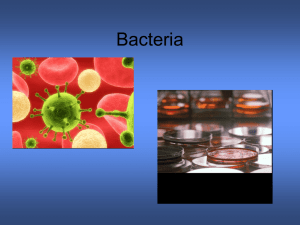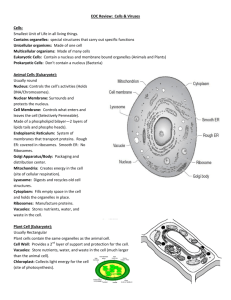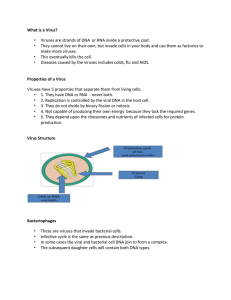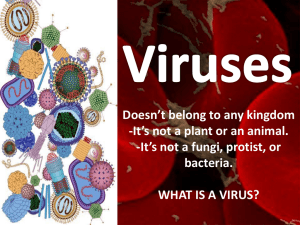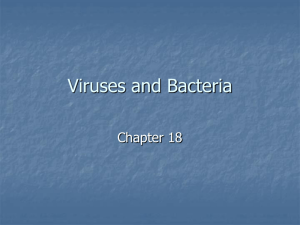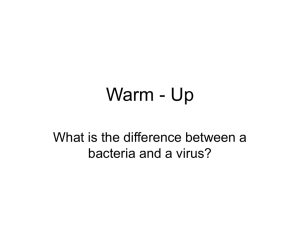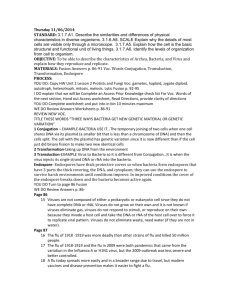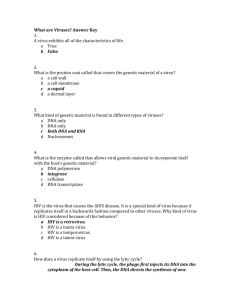Option D7: Antivirals
advertisement
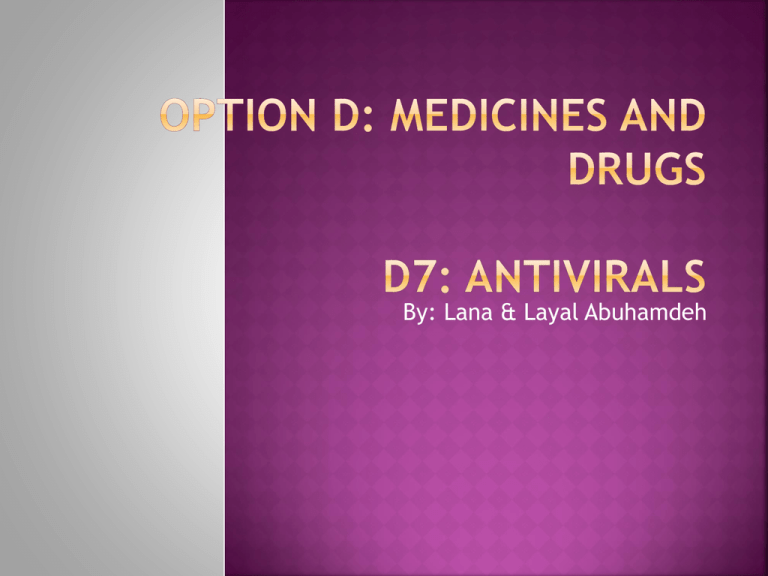
By: Lana & Layal Abuhamdeh VIRUSES Viruses are much smaller than bacteria Many different types of virus, vary in shape and structure All viruses have a central core of deoxyribosenucleic acid (DNA) or ribonucleic acid (RNA), surrounded by a coat (capsid) of regularly packed protein units called capsomeres. Unlike bacteria they have no nucleus or cytoplasm, and are therefore not cells. They do not feed, respire, excrete or grow, and they can reproduce only inside the cells of living organisms, using the materials provided by the host cell. They can replicate only by penetrating the living host cell and injecting their DNA or RNA into the cell’s cytoplasm. BACTERIA Group of microscopic, single-celled organisms They've different shapes such as rods, spheres, spirals and so on. possessing the prokaryotic type of cell construction prokaryotic: The DNA of most bacteria is found in a single circular chromosome and is distributed throughout the cytoplasm rather than contained within a membrane-enclosed nucleus. Some bacteria can cause food poisoning and infectious diseases in humans, most are harmless and many are beneficial. One difficulty in treating viral infections is the speed with which the virus multiplies. Antiviral drugs may work by altering the cell’s genetic material so that the virus cannot use it to multiply. Example: Acyclovir It is applied topically to treat cold sores caused by herpes virus. Structure is similar to deoxyguanosine (one of the building block s of DNA) It “tricks” the viral enzymes into using it as a building block for the synthesis of viral DNA, and thus prevents the virus from multiplying. Other antiviral drugs work by preventing the new viruses formed from leaving the cell and multiplying. Example: Amantadine It is active against the influenza virus. Neuraminidase: One of the enzymes used by all influenza viruses to stick to the host cell wall as it leaves. Amantadine works by inhibiting the active site on this enzyme. One of the problems with developing antiviral drugs is that viruses are regularly mutating. This is particularly the case with HIV which can lead to AIDS (acquired immune deficiency syndrome) Aids is caused by a retrovirus: contains RNA rather than DNA. The virus invades certain types of white blood cell known as T helper cells, which normally activate other cells in the immune system, with the result that the body is unable to fight infection. Once the virus invades a healthy cell, its first task is to make viral DNA from the RNA template using an enzyme called reverse transcriptase. This is the opposite process to that which takes place in normal cells. There are various ways drugs can counteract the HIV virus. Example Drug: AZT (Zidovudine) similar structure to acyclovir. AZT combines with the enzyme that the HIV virus uses to build DNA from RNA, and clogs up its active site. There is no cure or vaccine FOR HIV. Treating HIV positive individuals with antiretroviral drugs can prolong the period until AIDS develop. Best way to combat AIDS is still to educate the population.

